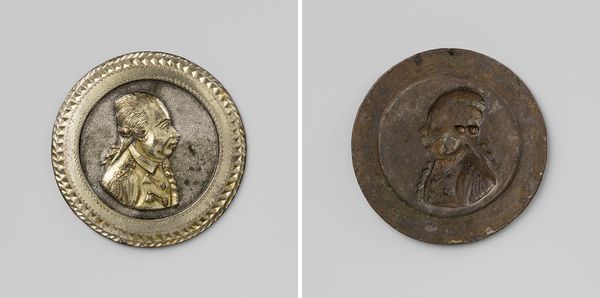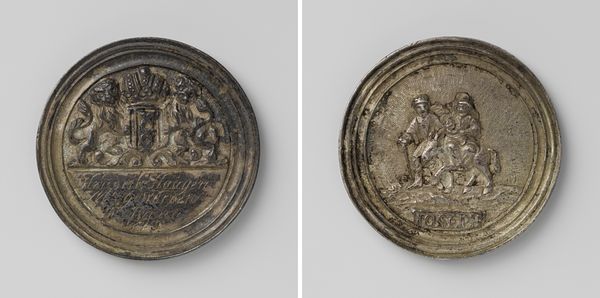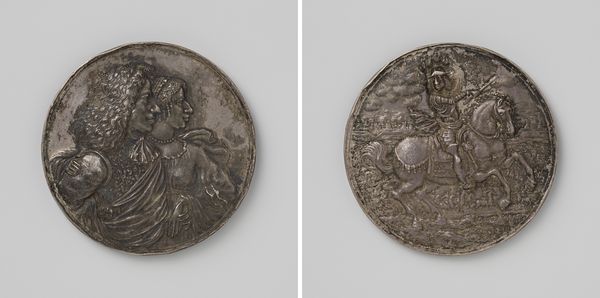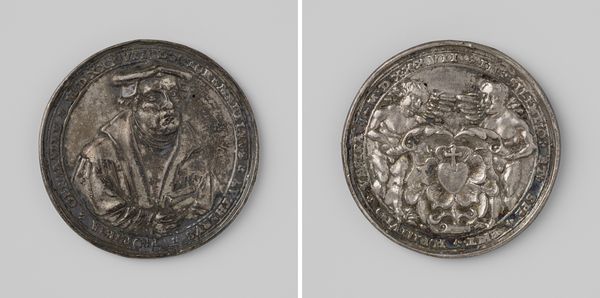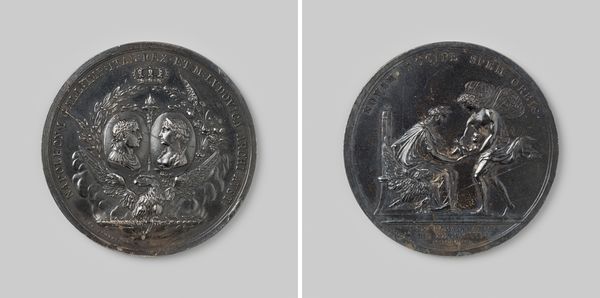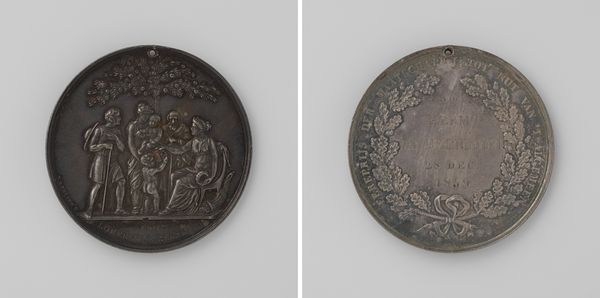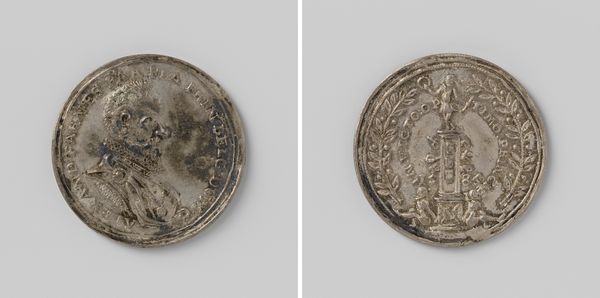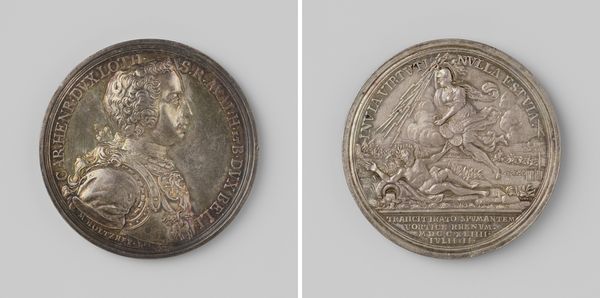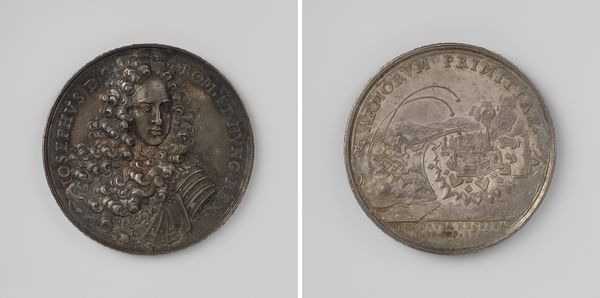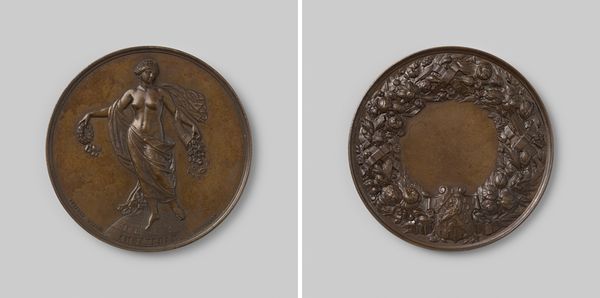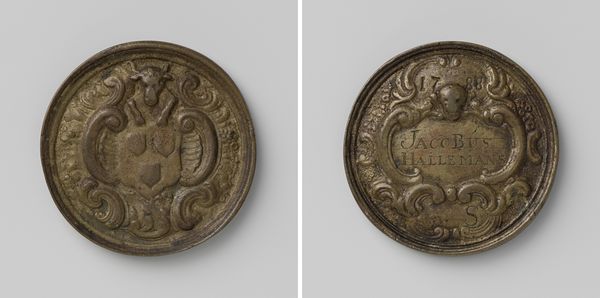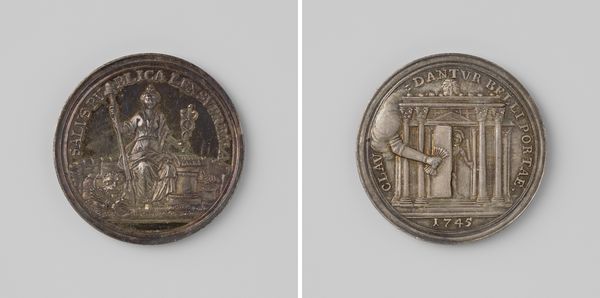
Willem, erfprins der Nederlanden, op de bevrijding van Nederland 1815 - 1865
0:00
0:00
metal, bronze, sculpture, engraving
#
portrait
#
neoclacissism
#
metal
#
bronze
#
sculpture
#
history-painting
#
engraving
Dimensions: length 4.1 cm, weight 2.34 gr
Copyright: Rijks Museum: Open Domain
Editor: Here we have "Willem, Erfprins der Nederlanden, op de bevrijding van Nederland," an engraving by David van der Kellen, dating sometime between 1815 and 1865. It's part of the Rijksmuseum collection, rendered in metal and bronze. I’m immediately struck by how official and almost severe the portrait feels. What stands out to you as you look at it? Curator: This portrait isn't just an image of Willem; it's a carefully constructed symbol of Dutch identity and the period after liberation. Medals like these, distributed and displayed widely, were vital tools for shaping national consciousness and memory. The profile view, a convention since antiquity, lends an air of timeless authority. Editor: So it's a symbol meant to evoke those sentiments, rather than just depicting an individual? Curator: Precisely. The very act of striking a medal connects Willem to a long lineage of leaders and heroes commemorated in metal. The inscription around the perimeter—can you make it out?—further reinforces this connection, framing him within a narrative of national deliverance. What feelings does the choice of bronze evoke? Editor: Hmm, bronze feels substantial, like it’s meant to last. Is that a deliberate choice, to create a sense of permanence? Curator: Absolutely. Bronze is associated with monuments and things of lasting importance, it suggests that Willem's role in liberating the Netherlands should be remembered. Think of how this image might have resonated with people at the time – what would they feel, seeing this image reproduced on coins or small medallions? Editor: That it's creating a legacy of leadership? It feels like calculated image-making! Curator: Indeed. Understanding these visual symbols gives us a window into the cultural and psychological landscape of 19th-century Netherlands. Editor: That makes me look at this seemingly straightforward portrait with entirely new eyes. Curator: Seeing beyond the surface allows us to unlock the power these images once held.
Comments
No comments
Be the first to comment and join the conversation on the ultimate creative platform.
